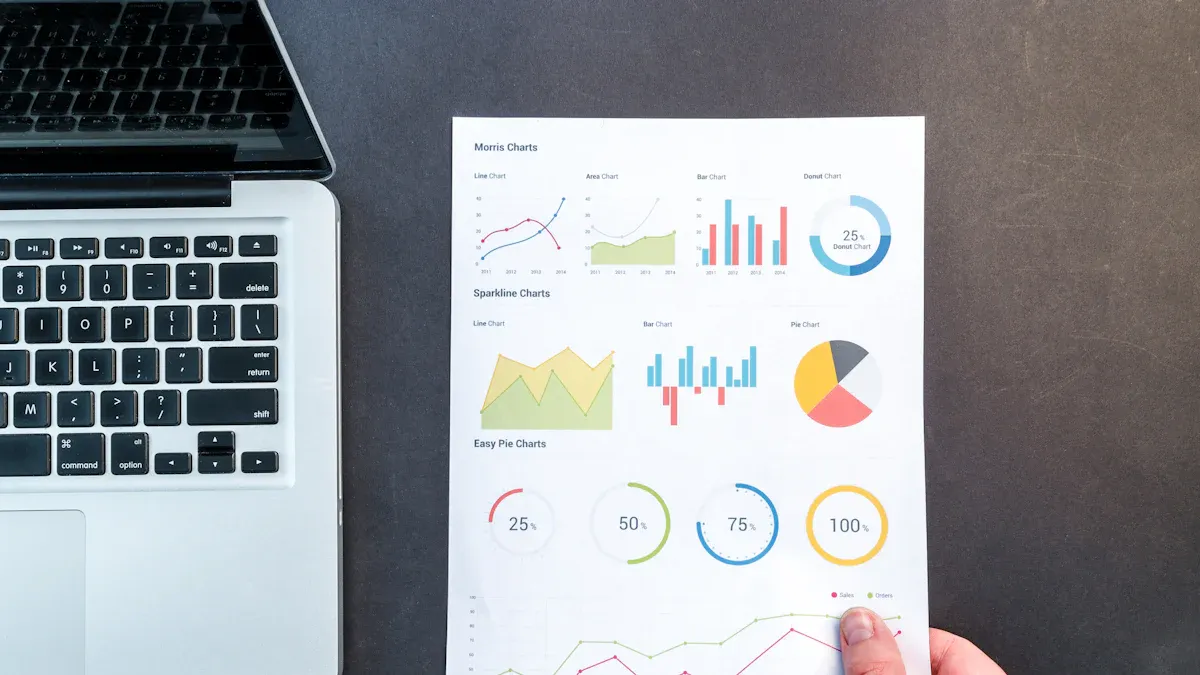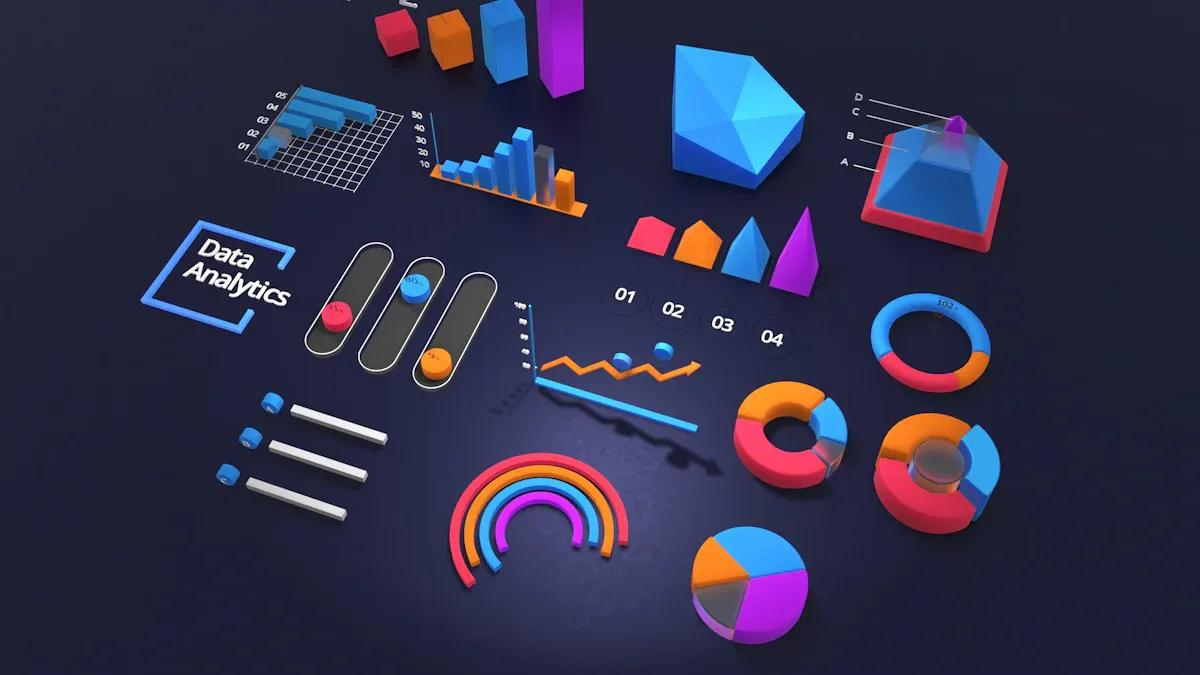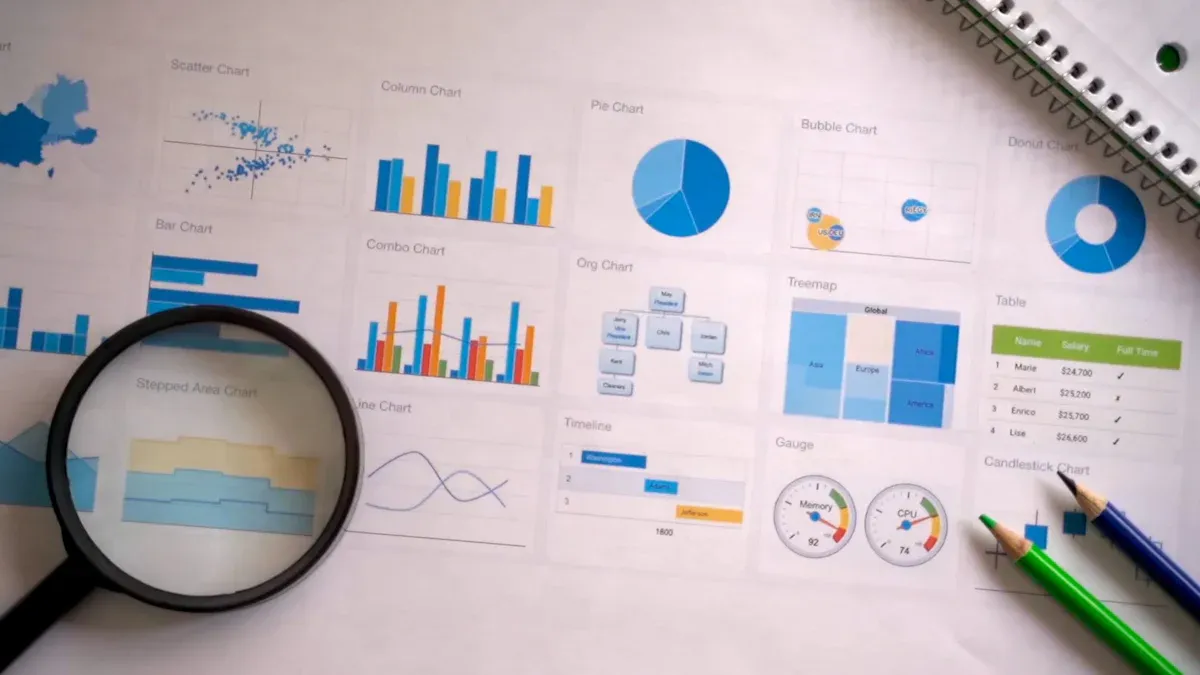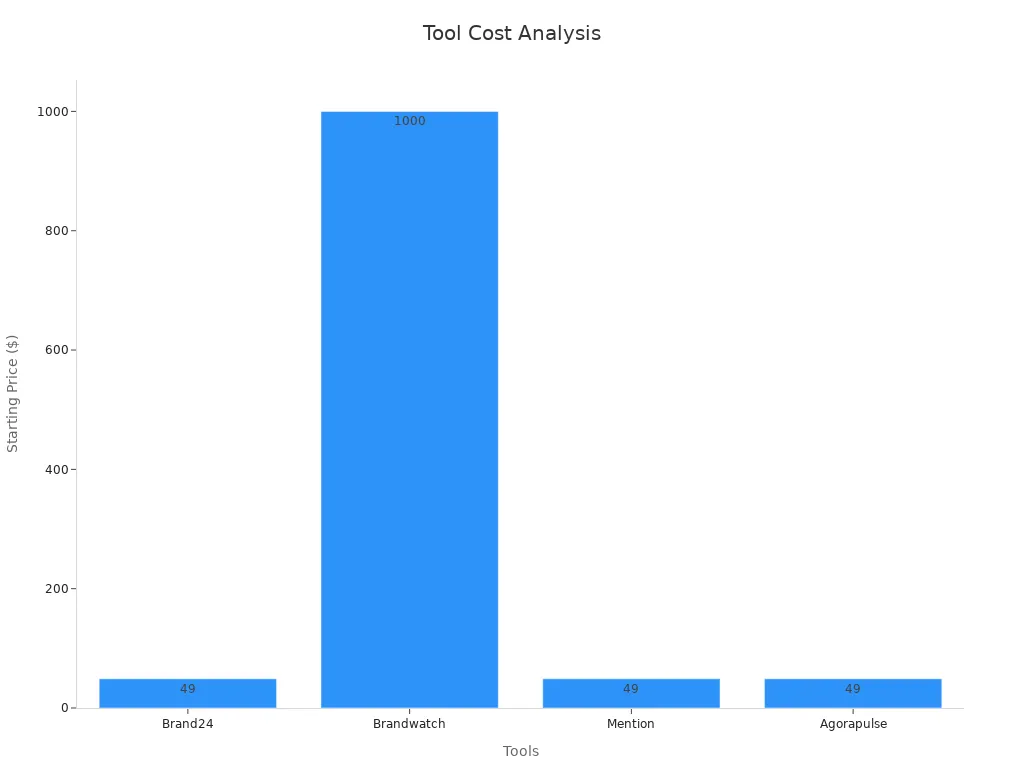Comprehensive Comparison of Brand Tracking Tools for 2025

I see brand monitoring tools as essential for 2025. I rely on these tools to track brand awareness, reputation, and sentiment in real time. Top options like Brand Awareness Pulse, Brand24, Mention, and Keyhole each offer unique features. For example, some focus on AI-driven sentiment analysis and direct integration with analytics platforms, while others excel at influencer tracking or multi-channel monitoring. Pricing varies widely. Brand Awareness Pulse stands out for affordable, plug-and-play monitoring, making it perfect for online businesses. Selecting the right tool depends on your business size, goals, and how much you value instant insights for managing brand reputation and awareness.
Key Takeaways
Brand monitoring tools help track what people say about your brand across many channels, giving you real-time insights into brand awareness and reputation.
Choosing the right tool depends on your business size, goals, and budget; affordable options like Brand Awareness Pulse offer powerful features for small to medium businesses.
Key features to look for include real-time alerts, AI-driven sentiment analysis, multi-platform tracking, and easy integration with tools like Google Analytics.
Using multiple metrics such as sentiment, share of voice, and customer feedback gives a fuller picture of your brand’s health and helps you respond quickly to issues.
Integrating brand monitoring into your daily workflow and sharing insights with your team improves decision-making and helps protect and grow your brand effectively.
Brand Monitoring Tools Overview
What Is Brand Monitoring?
When I think about brand monitoring, I see it as the process of collecting and measuring mentions of a brand across many channels. I use brand monitoring tools to track mentions on social media, websites, forums, and even podcasts. These tools help me answer a key question: What do people think of my brand? I can track mentions from social media posts, articles, YouTube videos, and customer feedback forms. Brand monitoring software has evolved a lot. Years ago, I relied on free tools like Google Alerts. Now, I have access to advanced platforms such as Brandwatch and Mediatoolkit. These tools offer features like real-time alerts, sentiment analysis, and long-term data tracking. Some entry-level plans start at $129 per month, while premium options can cost thousands. This range shows how much brand monitoring has grown in both sophistication and specialization.
Tip: I always track mentions of my brand name, product names, industry terms, and competitors. This helps me understand brand perception and awareness.
Why Brand Monitoring Matters
Brand monitoring matters because it gives me a clear view of how people see my brand. I use these tools to track awareness, sentiment, and perception. When I monitor mentions, I can respond quickly to negative feedback and manage crises before they grow. I also learn what customers like or dislike, which helps me improve my brand’s reputation. Tracking mentions across channels lets me see the impact of marketing campaigns and optimize my strategy. I find that brand monitoring software is essential for building strong customer relationships and staying ahead of competitors. The market for brand monitoring tools keeps growing. According to recent research:
Aspect | Details |
|---|---|
Market Size & Forecast | |
Market Segmentation | By Type: Cloud-based, On-premises |
By Application: Large Enterprises, SMEs | |
Regional Distribution | North America, Europe, Asia Pacific, Latin America, Middle East, Africa |
Key Countries | US, Canada, Mexico, UK, France, Germany, China, Japan, Brazil, Saudi Arabia, South Africa, etc. |
Competitive Landscape | Key Players: Keyhole, Synthesio, NetBase Quid, Brand24, Awario, YouScan, Agorapulse, Meltwater, Talkwalker, Brandwatch |
Market Dynamics & Trends | Includes COVID-19 impact, technological advances, digital transformation, AI automation, data privacy issues |
Research Methodology | Primary and secondary data collection, validation, triangulation |
I see that digitalization and the need for real-time data drive this growth. I rely on brand monitoring tools to track mentions, measure awareness, and understand sentiment. This helps me protect my brand’s perception and make smarter decisions.
Best Brand Monitoring Tools

Top Brand Tracking Tools
When I choose brand tracking software, I look for platforms that offer real-time insights, multi-channel monitoring, and actionable analytics. I want to know how my brand performs across social media, news, forums, and review sites. The best brand monitoring tools help me track mentions, measure sentiment, and benchmark my brand against competitors. I see that leading brand tracking tools support a wide range of metrics, such as Net Promoter Score (NPS), brand loyalty, brand awareness, brand recall, customer sentiment, branded search volume, and Share of Voice (SOV). These metrics give me a complete picture of my brand’s health.
I rely on brand monitoring software that provides dashboards with multiple metrics. This approach aligns with industry standards, which recommend using a combination of metrics rather than relying on just one. For example, I use customer sentiment analysis to understand how people feel about my brand. I also track Share of Voice to see how visible my brand is compared to competitors. Top brand tracking tools like Brandwatch, Mention, Brand24, and Talkwalker offer AI-driven sentiment analysis, real-time alerts, and influencer tracking. These features help me respond quickly to issues and identify growth opportunities.
I have seen that customer reviews and performance metrics play a big role in choosing the right tool. Tools like SurveySparrow, Sprinklr, Meltwater, and BuzzSumo provide advanced capabilities, including AI-powered sentiment analysis and multi-channel data aggregation. These platforms help me track customer reviews, respond to complaints, and improve my brand’s reputation. I find that using a combination of metrics—such as CSAT, NPS, and SOW—gives me a more accurate view of my brand’s performance.
Note: No single metric tells the whole story. I always combine several metrics to get a comprehensive understanding of my brand’s health.
Comparison Table
I created a table to compare the leading brand monitoring platforms for 2025. This table highlights key features, pricing, and best use cases. I included tools that stand out for their data coverage, AI capabilities, and adoption by thousands of companies.
Tool | Key Features / Capabilities | Pricing Model | Best Use Cases |
|---|---|---|---|
brands.menu | Low-cost, trend aggregation, accessible for ecommerce, easy setup | $99/mo | Ecommerce, startups, trend tracking |
Ahrefs | SEO-focused, monitors branded search, backlink tracking, competitor analysis | $99/mo+ | SEO, digital marketing, competitor research |
Attest | Consumer insights, survey-based brand tracking, audience segmentation | Custom pricing | Market research, brand perception studies |
Awario | Real-time monitoring, sentiment analysis, influencer tracking | $39/mo+ | SMBs, agencies, influencer marketing |
Blue Ocean | Competitive benchmarking, market landscape analysis | Custom pricing | Enterprise, strategic planning |
Brand24 | Monitors 25M+ sources, AI sentiment, influencer tracking, detailed reporting | $79/mo+ | SMBs, agencies, reputation management |
BrandMentions | Real-time alerts, sentiment analysis, competitor tracking | $99/mo+ | PR, agencies, competitive analysis |
Brandwatch | 1.4T conversations, AI sentiment, 360° dashboards, deep customer voice analysis | $800/mo+ | Enterprise, global brands, deep analytics |
BuzzSumo | Content performance, crisis monitoring, influencer tracking | $119/mo+ | Content marketing, PR, crisis management |
Google Alerts | Free, basic mention tracking, email notifications | Free | Individuals, small businesses, basic tracking |
Keyhole | Real-time alerts, volume predictions, AI sentiment, competitor analysis | $79/mo+ | Social media, campaign tracking |
Latana | Brand awareness tracking, audience segmentation, survey-based insights | Custom pricing | Brand health, market research |
Meltwater | Social listening, unlimited keywords, large historical data sets | $4,000/yr+ | Enterprise, PR, global monitoring |
Mention | 4,000+ companies, 1B sources, real-time monitoring, influencer tracking | $41/mo+ | Agencies, SMBs, influencer marketing |
Prezly | PR management, newsroom creation, media contact tracking | $50/mo+ | PR teams, media relations |
Quid | AI-driven data visualization, trend analysis, competitive intelligence | Custom pricing | Enterprise, data science, market analysis |
SEMrush | SEO, branded search, competitor tracking, content analytics | $129/mo+ | SEO, digital marketing, content strategy |
Sprinklr | Unified CXM, social listening, AI insights, enterprise integrations | $5,000/yr+ | Enterprise, customer experience management |
Suzy | Real-time consumer insights, survey automation | Custom pricing | Market research, brand perception |
Talkwalker | Multilingual sentiment, trend prediction, influencer analytics | $9,600/yr+ | Enterprise, global brands, trend analysis |
YouScan | 500B+ historical conversations, AI segmentation, automated tagging | $299/mo+ | Visual monitoring, social listening |
I see that these brand tracking tools offer a wide range of features and pricing models. For example, Brand Awareness Pulse stands out for its seamless Google Analytics integration, AI-driven sentiment analysis, and real-time brand KPIs. I find its tiered plans ideal for online businesses and agencies that want actionable insights without complex setups. Brands.menu appeals to ecommerce businesses with its low cost and trend aggregation features. Tools like Brandwatch and Talkwalker provide enterprise-grade analytics, supporting global brands with deep data coverage and advanced AI capabilities.
Many of these platforms support real-time monitoring and multi-channel tracking. Mention, for example, monitors over a billion sources and serves more than 4,000 companies. Brandwatch analyzes 1.4 trillion customer conversations and adds 500 million new conversations daily. Brand24 covers 25 million online sources in real time. YouScan gives me access to 500 billion historical conversations, which helps with long-term trend analysis. BuzzSumo and Keyhole focus on influencer tracking and content performance, which I find useful for campaign management.
I always consider my business needs, budget, and the specific metrics I want to track. The best brand tracking software for me combines real-time alerts, AI-powered sentiment analysis, and flexible reporting. I use these tools to monitor my brand’s reputation, measure awareness, and respond quickly to changes in customer sentiment.
Tip: I recommend starting with a tool that matches your current business size and goals. You can always scale up as your brand grows.
Key Features of Brand Monitoring Software

Real-Time Alerts
I rely on real-time alerts to stay ahead of any changes in my brand’s reputation. Brand monitoring software sends instant notifications when people mention my brand across digital channels. This feature helps me spot negative mentions or misinformation quickly. I can respond before issues escalate. Tools like Brand24, Google Alerts, and Brandwatch provide live push notifications and customizable alerts. These platforms use AI to detect spikes in mentions or sudden shifts in sentiment. I find that real-time brand monitoring improves my ability to engage with customers and protect my brand image. When I track mentions as they happen, I can address concerns and show that my brand listens.
Tip: Setting up alerts for unusual activity or sentiment changes helps me catch potential crises early.
Sentiment Analysis
Sentiment analysis gives me a deeper understanding of how people feel about my brand. I use brand tracking software to analyze sentiment in social media mentions, reviews, and news articles. AI-driven sentiment analysis can interpret complex language, emojis, and slang. Platforms like Sprout Social and Brandwatch support multilingual sentiment analysis, which helps me understand global audiences. I have seen reports showing that brands using advanced sentiment analysis can boost ROI by over 200%. These tools help me track sentiment trends, improve customer experience, and craft targeted campaigns. When I analyze sentiment, I gain insights that guide my brand strategy.
Multi-Platform Tracking
Multi-platform tracking is essential for a complete view of my brand’s presence. I use brand monitoring software to track mentions across social media, forums, news sites, and even AI platforms. This approach lets me compare my brand’s performance against competitors and measure share of voice. Tools like Brand24 and Otterly.AI aggregate data from multiple sources, providing insights into engagement rates, sentiment, and brand awareness metrics. I can track mentions and analyze sentiment trends across all channels. Multi-platform tracking supports my efforts to optimize campaigns and monitor brand health.
Integration and Reporting
Integration and reporting features help me turn data into actionable insights. I connect my brand tracking software with platforms like Google Analytics or Power BI to unify my data sources. This integration streamlines reporting and improves accuracy. I have seen companies like Metro Bank and Renault use integrated dashboards to speed up reporting and enhance decision-making. Real-time dashboards let me monitor key metrics, such as brand awareness metrics, sentiment, and engagement. I use these insights to adjust my brand strategy and demonstrate ROI to stakeholders. Effective integration and reporting ensure that I always have a clear picture of my brand’s performance.
Brand Monitoring Software Pricing
Free and Affordable Options
When I look for a brand monitoring tool, I often start with free or affordable solutions. Google Alerts gives me a basic way to track brand mentions at no cost. This tool works well for individuals or small businesses that want simple notifications. For more advanced features, I turn to affordable options like Brand Awareness Pulse, brands.menu, and Awario. These tools start at prices as low as $19 to $49 per month. I find that Brand Awareness Pulse stands out because it offers a Pro plan at $49 per month and an Enterprise plan at $199 per month. These plans give me access to real-time brand KPIs, AI-driven sentiment analysis, and seamless Google Analytics integration. This makes it easy for online businesses and agencies to track brand health without a big investment.
I notice that many users value affordable tools. Brand24, for example, has a 94% user happiness rate and a strong recommendation score. Mention and Agorapulse also start at $49 per month, making them accessible for startups and growing brands. I always recommend trying free trials before making a decision.

Mid-Range and Enterprise Solutions
As my brand grows, I sometimes need more advanced features. Mid-range tools like Brand24 and Mention offer plans between $50 and $100 per month. These options give me better reporting, integrations, and automation. They work well for businesses that want to scale their brand monitoring without moving to enterprise pricing.
For large organizations, enterprise solutions like Meltwater, Sprinklr, and Talkwalker provide extensive customization, advanced analytics, and premium support. These platforms often cost between $5,000 and $50,000 per year. I see that enterprise tools focus on scalability and deep data analysis. They help me manage complex brand strategies across multiple markets.
Plan Tier | Price Range (per user/month) | Target Customer | Key Features and Support Level |
|---|---|---|---|
Mid-range | $50 - $100 | Growing businesses with moderate scale | Sales automation, reporting, integrations |
Enterprise | $150 - $1,000+ | Large enterprises with complex needs | Extensive customization, advanced analytics, multiple integrations, comprehensive support |
I always compare features and pricing to find the best fit for my brand. Affordable tools like Brand Awareness Pulse and brands.menu lower the barrier to entry, while enterprise solutions deliver power for global brands.
Choosing Brand Monitoring Software
Assessing Business Needs
When I start looking for a brand monitoring tool, I first think about my business size and goals. I ask myself how often I need to track mentions and which channels matter most. For a small online shop, I might only need basic brand insights and simple sentiment tracking. If I run a larger company, I want deeper consumer insights, more frequent updates, and advanced analytics. I also look at my audience demographics. Descriptive statistics help me understand who talks about my brand and how they feel. This guides my choice, making sure I get the right insights for my reputation and crisis management needs.
Evaluating Features
I always compare features side by side before making a decision. I look for tools that offer real-time alerts, customizable dashboards, and strong integration with my existing marketing stack. I want to track sentiment, brand mentions, and competitor activity. To make this easier, I use a table to compare practical criteria and real business cases:
Criteria / Case Study Aspect | Description / Example |
|---|---|
Coverage | Tracks AI search engines, LLMs, chatbots (Google AI, Bing Copilot, ChatGPT, Gemini, Perplexity, etc.) |
Data Accuracy & Reliability | Real-time updates, transparent sources, detects AI misquotes |
Key Metrics | Brand mentions, sentiment, AI citations, topic associations, share of voice |
Competitive Analysis | Benchmarks against competitors, finds content gaps |
Real-Time Alerts & Reporting | Instant notifications, customizable reports |
Integration & Usability | Works with SEO, CRM, PR, social listening tools; easy to use |
Scalability & Cost | Ranges from enterprise to budget-friendly; consider ROI |
AI Query Quality | Customizable, scalable prompts; supports localization and SEO |
Data Visualization & Analysis | Actionable dashboards, demographic segmentation |
Business Case Examples | Bluefish AI (enterprise), BrandLight (advisory), Xfunnel.ai (self-service) |
Considering Support and Integration
Support and integration play a big role in my decision. I want a tool that fits smoothly with my current systems, like Google Analytics or my CRM. Good support helps me solve problems fast and get the most from my brand monitoring investment. I also check if the tool offers training or onboarding. This guides my team and ensures we use all features for better consumer insights and brand insights. When I find a tool that matches my needs, offers strong integration, and provides helpful support, I know I can trust it to deliver the insights I need to protect my reputation and respond quickly to any crisis management situation.
Maximizing Brand Tracking Tools
Workflow Integration
I make brand monitoring part of my daily routine by connecting tracking tools with my existing systems. When I automate tracking, I save time and reduce errors. For example, I use automated reminders and intelligent workflows to increase participation and cut down on manual work. I have seen companies like N26 use AI-driven tracking to segment audiences and launch targeted campaigns. L.L. Bean improved customer experience by using survey segmentation. I follow a structured process: I set clear goals, segment my audience, analyze qualitative data, adjust my strategy, and optimize over time. Integrating tracking tools with platforms like Google Analytics or CRM systems gives me real-time insights and centralizes my data. This approach improves communication and makes my workflow more efficient. Notifications and integrations help me respond quickly to new mentions and changes in brand health metrics.
Metrics Selection
I focus on the most relevant metrics to measure my brand’s performance. I track brand awareness, reputation, loyalty, engagement, and sentiment analysis. I also monitor share of voice, unprompted brand recall, and purchase intent. Web analytics metrics such as website traffic, bounce rate, and conversion rate help me link online activity to brand effectiveness. I use dashboards that consolidate these metrics from social media, surveys, and web analytics. This gives me a real-time view of brand health metrics. I rely on primary research, like surveys and interviews, to detect new trends. By combining these brand health metrics, I get a clear picture of my brand’s strengths and weaknesses. Tools like Brand Awareness Pulse make it easy to track these brand health metrics and adjust my strategy based on actionable data.
Team Collaboration
I share tracking insights and brand health metrics across my team to drive better decisions. Centralized data access improves communication and helps everyone stay informed about key mentions and trends. I encourage my team to use customizable templates for reporting, which increases adoption and completion rates. Automated reminders and integrated dashboards keep everyone on track. When I share brand health metrics, I align my team’s efforts with company goals. Real-world brands like Oddbox and MOMA have used tracking tools to simplify brand health tracking and boost collaboration. I find that regular updates and open discussions about mentions and brand health metrics help my team respond faster and innovate together.
I have learned that choosing the right brand monitoring tool depends on matching features and pricing to your business needs. I always look for tools that offer real-time dashboards, customizable reports, and AI-powered analytics to protect my brand’s reputation. Consistent monitoring and sharing insights across teams help me spot trends and improve strategy. I recommend starting with user-friendly options like Brand Awareness Pulse.
Description / Purpose | |
|---|---|
Media Mentions | Tracks brand mentions across all media channels. |
Share of Voice (SOV) | Measures brand visibility compared to competitors. |
Engagement Metrics | Shows audience interaction and interest. |
Real-time monitoring captures mentions as they happen.
Interactive dashboards make it easy to visualize and share key metrics.
Access to historical data supports benchmarking and trend analysis.
FAQ
What is the easiest way to start tracking my brand online?
I always recommend starting with a plug-and-play tool like Brand Awareness Pulse. I just connect it to Google Analytics, and I see my brand KPIs instantly. No complicated setup needed.
Tip: Try the free trial first to see if it fits your needs.
How often should I check my brand monitoring dashboard?
I check my dashboard daily for real-time updates. This habit helps me catch issues early and spot trends. For smaller brands, checking two or three times a week works well.
Daily checks = faster response
Weekly checks = trend analysis
Can I monitor my competitors with these tools?
Yes, I use most brand monitoring tools to track competitor mentions and sentiment. I compare my share of voice and see where I stand in the market. This insight helps me adjust my strategy.
Note: Benchmarking against competitors gives me a clear advantage.
Are affordable brand monitoring tools reliable?
I find that affordable tools like Brand Awareness Pulse and brands.menu deliver accurate data for most online businesses. They offer real-time alerts, sentiment analysis, and easy integration. I trust them for daily brand health tracking.
Reliable for small to medium brands
Easy to set up and use
See Also
Top Brand Management Software Reviewed By Features And Cost
Leading Tools To Boost Your Brand Marketing Efforts
Unlock Your Brand’s Full Potential Using These Resources


